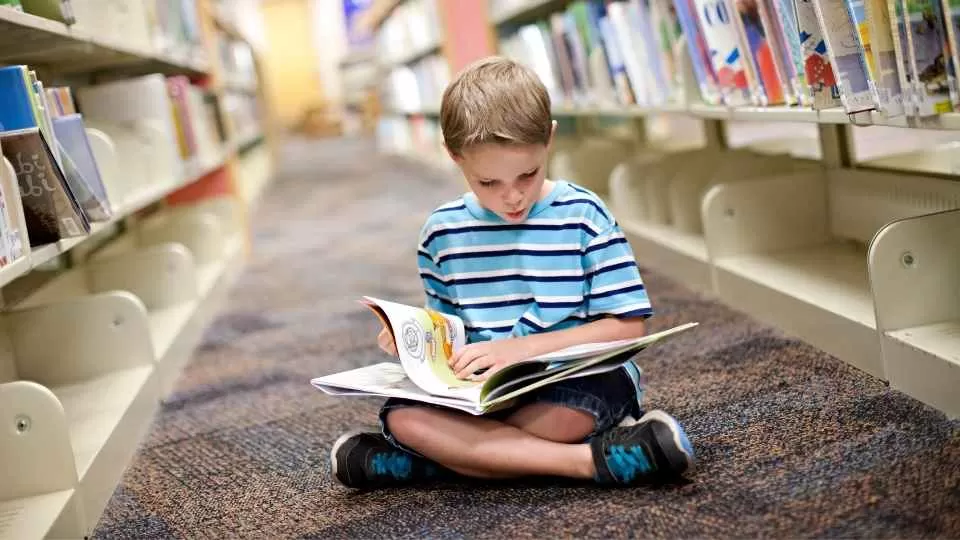Online therapy for kids from the aspect of a parents is increasing in prioritizing mental health for their children. The demand for accessible and effective therapy options has surged. Online therapy for kids has emerged as a flexible solution, helping children and families overcome challenges and build emotional resilience from the comfort of home. In this article, we’ll cover the 10 key benefits of online therapy for kids, how it works, and tips on choosing the right provider, so parents can confidently support their child’s mental health journey.
What Is Online Therapy for Kids?
Online therapy for kids involves licensed mental health professionals conducting therapy sessions via digital platforms, such as video calls. This therapy is customized for children, addressing their specific needs and ensuring they remain engaged in a safe, comfortable environment. Unlike traditional therapy, which typically requires travel to a clinic or therapist’s office, online therapy allows children to access mental health support from their own homes.
The approach often includes interactive exercises and kid-friendly therapy tools, creating a space where children feel safe, respected, and engaged. Online therapy can be incredibly effective in addressing a range of mental health issues in children, including anxiety, ADHD, and depression. According to the American Psychological Association, the effectiveness of online therapy for young clients has been proven, showing comparable results to in-person therapy for children with various mental health concerns.
10 Key Benefits of Online Therapy for Kids
1. Increased Accessibility for Families Everywhere
Online therapy removes geographic and logistical barriers, making therapy more accessible for families everywhere. Whether living in rural areas or regions with limited mental health resources, families can connect with licensed therapists and specialists in child psychology without the need to travel. This increased accessibility ensures that more children, especially those in underserved areas, can receive quality mental health care.
2. Flexible Scheduling to Accommodate Busy Family Lives
For busy families, finding time for in-person therapy sessions can be challenging. Online therapy offers flexibility, allowing parents to schedule sessions at times that work best for their children, whether early morning, late evening, or even weekends. This flexibility means families can fit therapy into their routines, minimizing disruptions to school, sports, and other activities.
3. Reduced Social Stigma for Kids
Therapy can sometimes carry a social stigma, especially among children and teens. The online format allows children to engage in therapy privately, from their homes, reducing the chance of feeling embarrassed or judged by peers. Studies have shown that when therapy is online, children may feel more at ease, helping them open up and engage more fully in their sessions.
4. Engaging and Kid-Friendly Online Platforms
Therapists who work with children often use platforms with kid-friendly features, such as games, animations, and interactive tools, to keep children engaged. These elements make therapy feel less formal and more approachable for younger clients. Such digital tools are invaluable for therapists as they enable a therapeutic connection with children who may otherwise feel shy or reluctant to participate in traditional therapy sessions.

5. Improved Consistency and Routine with Regular Online Sessions
Consistency is key to effective therapy, especially for children who thrive on routine. Online therapy provides a dependable framework that allows children to engage in regular sessions without the logistical challenges associated with in-person appointments. By avoiding travel-related obstacles like weather delays, transportation issues, or tight schedules, families can more easily maintain a steady therapy routine. This consistency is critical, as research indicates that regular therapy sessions improve treatment outcomes, especially for children working on emotional regulation or behavioral concerns.
Moreover, having a predictable routine offers children a sense of stability and security, which is particularly important for those dealing with anxiety, ADHD, or other behavioral disorders. By establishing a weekly or bi-weekly session that becomes a regular part of their lives, children begin to anticipate and feel comfortable with therapy. This allows for a deeper, more consistent engagement, which can lead to greater progress over time.
6. Cost-Effectiveness for Families Seeking Therapy
Online therapy often proves to be a cost-effective alternative for many families, reducing or eliminating travel expenses and allowing for more competitive pricing among online providers. Many online therapy platforms offer session packages or sliding scale fees that make therapy more affordable. Additionally, the flexibility of online therapy allows parents to select therapists outside their immediate area, giving them access to a broader range of options and the ability to compare costs. For families with multiple children who may benefit from therapy, this financial relief is invaluable.
In cases where insurance policies cover online mental health services, families can maximize their coverage to make therapy even more affordable. According to a study published in the Journal of Health Economics, online therapy costs can be up to 25% lower than in-person therapy, depending on the platform and therapist. This cost savings, combined with the elimination of travel time, makes it easier for families to maintain therapy without incurring financial stress.
7. Enhanced Comfort and Familiarity of the Home Environment
For children, feeling safe and comfortable is essential to opening up emotionally during therapy. Online therapy allows children to remain in their familiar home environment, which can reduce feelings of anxiety or fear that may be triggered by a clinical setting. In this comfortable space, children are more likely to express their thoughts and emotions freely, leading to more honest communication with their therapist. Being in their own surroundings also allows children to incorporate their personal interests and belongings into the therapy process, which can aid in grounding and comfort during sessions.
Additionally, a home setting reduces the pressure of being in a formal office, where some children might feel intimidated or distracted. When children are more relaxed, they tend to participate more fully and are more open to engaging with therapeutic activities. This makes online therapy particularly beneficial for children who experience social anxiety or are hesitant to leave home.
8. Greater Privacy and Reduced Anxiety for Shy or Introverted Kids
Many children feel uncomfortable with the idea of going to a therapist’s office, especially if they are shy or introverted. Online therapy offers a level of privacy and anonymity that can help reduce anxiety, allowing children to focus more on their therapy and less on their surroundings or fears of judgment. Children who might be reluctant to share openly in person often feel more at ease in a virtual setting, where they don’t have to face the added stress of a new environment or unfamiliar people.
This private, personal setting allows introverted children to warm up to the therapy process in a way that feels natural to them. The ability to turn off the camera for moments, take short breaks, or communicate through typing (if that’s part of the platform) gives children more control over their interaction with the therapist. This flexibility can enhance the therapeutic relationship and help the child gradually build confidence in expressing themselves.
9. Personalized and Engaging Therapy Activities
Online therapy for kids often incorporates personalized activities that are adapted to fit each child’s unique needs and interests. Many therapists use interactive tools, videos, games, and role-playing activities to make therapy sessions both enjoyable and effective for children. These activities keep young clients engaged and invested in the therapy process, encouraging them to develop coping skills and emotional tools in a fun and memorable way. Because these tools are tailored to individual preferences and personalities, children are more likely to stay involved and benefit from the therapeutic exercises.
Additionally, many therapists incorporate creative exercises like drawing, storytelling, and play therapy, which are effective in helping children articulate their thoughts and feelings. Children who may struggle to express themselves verbally can benefit from these alternative approaches, which allow them to explore emotions in a safe, structured manner. This level of customization is often easier to achieve through online platforms, which give therapists access to a wide range of digital resources.
10. Increased Parental Involvement and Insight
Online therapy often encourages greater parental involvement, as parents can more easily be present at the start or end of sessions to discuss goals and progress with the therapist. This involvement is beneficial for younger children, as parents can reinforce therapeutic practices at home and stay updated on their child’s progress. In many cases, therapists will provide feedback or suggest activities that parents can incorporate into their daily routines to support their child’s mental health journey.
Being involved in the process gives parents a better understanding of the challenges their child may be facing and offers insights into how they can support their child outside of therapy. Moreover, online therapy allows for easier scheduling of family sessions when appropriate, fostering open communication and unity in addressing mental health concerns. By being an integral part of the therapy process, parents are equipped to reinforce positive behaviors and encourage their child’s growth, ultimately enhancing the therapy’s impact.

How Online Therapy for Kids Works: Step-by-Step Guide
Step 1: Initial Assessment with a Licensed Therapist
Online therapy for kids begins with an initial assessment conducted by a licensed therapist. During this session, the therapist evaluates the child’s needs, concerns, and goals. This intake assessment helps the therapist create a personalized care plan. The assessment also involves discussions with parents to gain insights into the child’s behavior, past experiences, and any specific issues to address.
Step 2: Setting Up a Kid-Friendly Environment for Online Therapy
Creating a comfortable and distraction-free space is essential for effective online therapy. Parents can help by setting up a dedicated area in the home, free from noise and interruptions. Additionally, ensuring that all technical equipment is ready, including a stable internet connection, helps to avoid disruptions during the session. A comfortable environment encourages the child to focus and engage fully in therapy.
Step 3: Regularly Scheduled Online Sessions
Consistency is key in therapy, and regular online sessions allow children to form a routine that contributes to their progress. Sessions are usually held weekly or bi-weekly, depending on the child’s needs. The flexibility of online therapy enables parents to schedule these sessions consistently, which is crucial for seeing improvement in the child’s mental health and coping strategies over time.
Key Considerations When Choosing Online Therapy for Kids
Finding Licensed, Kid-Specialized Therapists
One of the most critical aspects of successful therapy for kids is finding a licensed therapist who specializes in child psychology and has experience working with younger clients. Parents should verify credentials and ensure the therapist is qualified to work with children. Many online therapy platforms provide information on therapists’ licenses and specializations, making it easier to select the right fit for the child.
Ensuring Privacy and Security for Online Sessions
Privacy and security are paramount in online therapy. Licensed platforms should comply with HIPAA regulations to protect the child’s confidential information. Parents are encouraged to use platforms that guarantee secure, encrypted sessions, ensuring their child’s safety during online therapy. Discussing privacy measures with the therapist can provide additional reassurance.
Exploring Various Therapy Modalities Available Online
Online therapy offers a range of therapeutic approaches that can be tailored to a child’s unique needs. Modalities such as Cognitive Behavioral Therapy (CBT), play therapy, and art therapy are commonly offered through online platforms. Each modality has different benefits, allowing therapists to use methods that are best suited to the child’s specific mental health concerns, whether anxiety, ADHD, or behavioral issues.
Addressing Parents’ Concerns about Online Therapy for Kids
Common Misconceptions About Online Therapy
Many parents worry that online therapy may not be as effective as in-person sessions for children. However, research has demonstrated that online therapy can yield similar outcomes, with children showing improvements in their emotional well-being and behavior. Addressing misconceptions helps parents feel more confident in their choice of online therapy for their child.
Understanding the Therapist’s Role in Online Sessions
In online sessions, therapists work to keep children engaged, providing a supportive and interactive environment. They use techniques that are adapted to the online format, such as visual aids, screen-sharing, and interactive games. This ensures that children remain attentive and feel motivated to participate, which is key to achieving positive therapy outcomes.
Monitoring Your Child’s Progress in Online Therapy
Tracking progress is essential for measuring therapy success. Parents can monitor changes in their child’s behavior, mood, and coping skills over time. Regular communication with the therapist helps parents stay informed about their child’s progress and any areas requiring additional focus. Feedback loops between parents and therapists ensure that the child’s needs are continually addressed.
Success Stories and Case Studies on Online Therapy for Kids
Real-Life Case Studies of Kids Benefiting from Online Therapy
There are numerous stories of children who have successfully managed anxiety, ADHD, and other issues through online therapy. These case studies highlight how children, even those hesitant about therapy, can thrive in a virtual setting. By engaging with relatable therapy tools and connecting with compassionate therapists, many children have experienced significant improvements in their mental health.
Parental Feedback and Testimonials on Online Therapy
Parental feedback provides valuable insights into the effectiveness of online therapy. Many parents report seeing positive changes in their child’s behavior, emotional resilience, and communication skills. Reading testimonials and feedback from other parents can be reassuring for those new to online therapy. Visiting platforms that offer testimonials, like Psychology Today’s directory, can provide examples of real experiences and success stories.
How to Get Started with Online Therapy for Your Child
Researching Available Online Therapy Providers
Parents can start by researching reputable online therapy providers. Websites like Psychology Today’s directory offer comprehensive lists of licensed professionals who specialize in children’s therapy. Reading reviews, checking credentials, and understanding the platform’s security measures are all crucial steps in selecting a reliable provider.
Steps to Prepare Your Child for Their First Online Session
Introducing the idea of online therapy to children in a positive, non-threatening way helps them feel more comfortable. Explain that therapy is a safe space where they can talk about their feelings and work through challenges. Letting them know what to expect can reduce any fear or resistance and help them view therapy as a positive experience.
Setting Realistic Goals and Expectations with Your Child’s Therapist
Goal-setting is a key part of therapy, providing a roadmap for both the child and therapist. Discussing realistic expectations with the therapist ensures that progress is tracked effectively, and parents remain engaged in the therapy process. Regular check-ins with the therapist also help parents stay informed and aligned on therapeutic goals.
Conclusion
Online therapy for kids offers numerous benefits, from increased accessibility to reduced stigma and flexible scheduling. It enables children to receive quality mental health support in a comfortable, familiar environment, fostering their emotional resilience and growth. For parents exploring therapy options, online therapy is a valuable and effective choice, providing a reliable pathway to mental health support that meets today’s family needs. By selecting the right therapist, preparing a supportive environment, and engaging in consistent therapy, parents can ensure their children receive the mental health care they deserve.
Coping skills for little ones: Online Therapy for Kids
FAQs
- What age is suitable for kids to start online therapy?
Most children can start online therapy as young as 5, though this depends on individual needs and the therapist’s recommendations. - Can online therapy be effective for children with severe anxiety?
Yes, studies show that online therapy can be highly effective for children with anxiety when provided by qualified therapists who use tailored approaches. - How can I ensure my child’s privacy in online therapy?
Choose HIPAA-compliant platforms that offer encrypted sessions to protect your child’s privacy. Discuss privacy measures with your provider for added assurance. - Are online therapy sessions covered by insurance?
Many insurance providers now cover online therapy. Check with your insurance provider to confirm coverage for your child’s sessions. - What should I do if my child feels resistant to therapy?
Encourage open discussions about therapy’s benefits and address any fears they may have. Gradually introduce the idea and reassure them that it’s a safe space.





